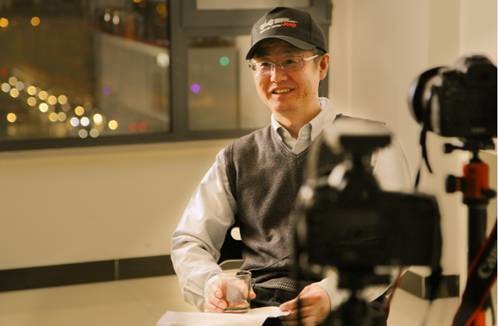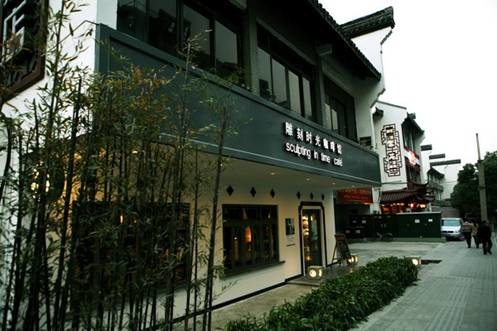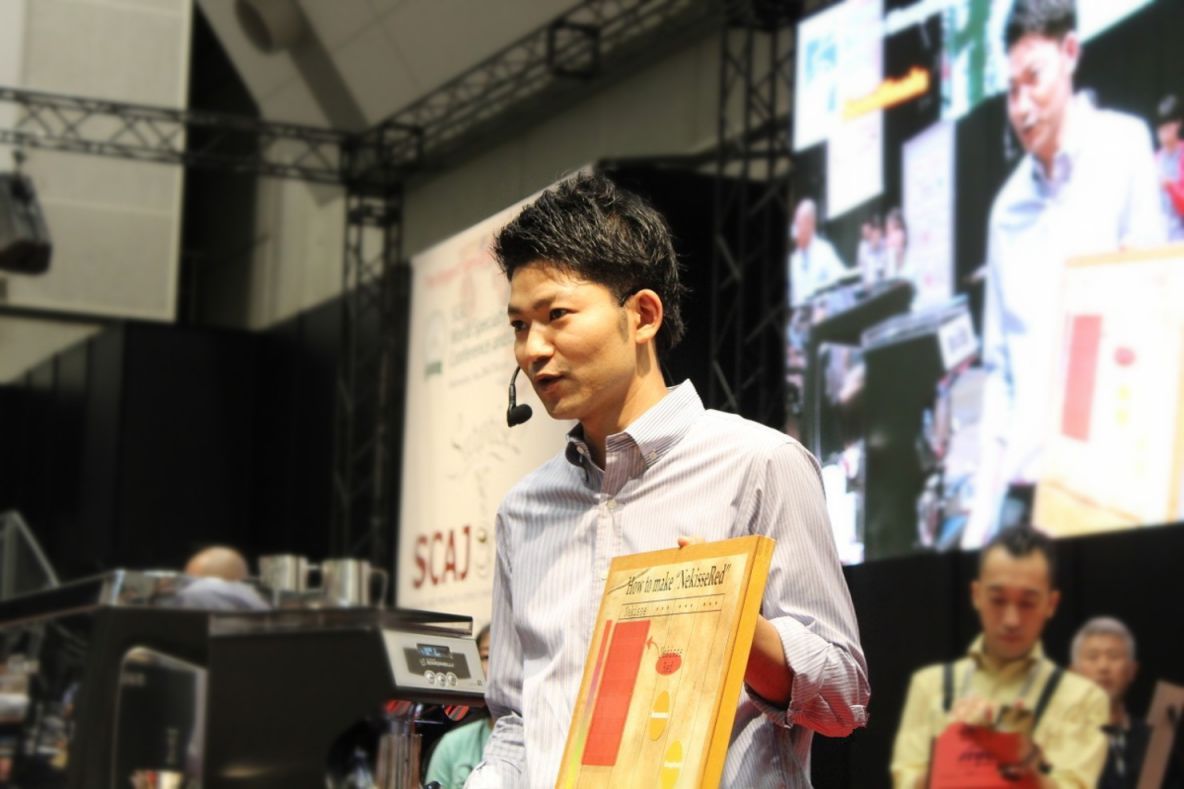Share the story of Huang Wei, a famous Chinese coffee roaster.
Follow the caf é (Wechat official account vdailycom) and found that Beautiful Cafe opened a small shop of its own.
As an imported product from the West, it is not easy for coffee to give birth to a coffee master in China.
Our protagonist today is Huang Wei, who learned cocoa processing technology and coffee roasting equipment and production technology during his participation in the construction of a cocoa processing plant assisted by China in Ghana in Africa. After returning to China in 2001, he came into contact with coffee cultivation due to work related to business trips in Yunnan and other places, and then went all out to embark on the road of coffee baking.

Out of his obsession with coffee roasting, Huang Wei is very studious in this industry. He has successively participated in coffee roasting training organized by the European Fine Coffee Association, face-to-face instruction from experts from American Diedrich coffee roaster manufacturers and Italian Petroncini coffee roasters, and obtained coffee production certificates from the American International Academy of Fine Coffee (International Academy of Specialty Coffee) and coffee roasting training certificates from German Probat roasters. Certificate of course instructor (coffee cup test certificate, coffee laboratory equipment use, commissioning and testing certificate, coffee grinding and particle size analysis laboratory certificate) from the Baker Association of American Fine Coffee Association.

Today, Huang Wei has become a world-class coffee master, the only roaster member of the American High-end Coffee Association and the technical director of carving time coffee roasting. It sounds very high-end.
[related reading]
Three native species of coffee
There are about 40 species of coffee plants, but the only ones that can produce coffee beans of commercial value are Arabica, Robusta and Liberian. these three species are called the "three native species of coffee".
1. Arabica species (scientific name Coffea arabica)
The origin of the Arabica species is the Abyssinia Plateau of Ethiopia (now the Ethiopian Plateau). In the early days, it was mainly eaten as medicine (Islamic couples used it as a secret medicine for physical and mental healing or to awaken the brain). It developed the habit of baking and drinking in the 13th century and was introduced to Europe through the Arab region in the 16th century. it has become a favorite drink all over the world.
Arabica coffee accounts for 75% of all coffee. Its excellent flavor and aroma make it the only coffee that can be drunk directly among these native species. But its resistance to dryness, frost, diseases and insect pests is low, especially the natural enemy of coffee-leaf rust, so the producing countries are committed to variety improvement. Sri Lanka is an example. Sri Lanka used to be a well-known coffee producer, but coffee farms were not spared by leaf rust at the end of the 19th century. Since then, Sri Lanka has turned to develop the black tea industry and rank in the same black tea kingdom as India.
Arabica coffee beans are mainly grown in South America (except parts of Argentina and Brazil), Central America and Africa (Kenya, Ethiopia and other places, mainly East African countries), Asia (including parts of Yemen, India and Papua New Guinea).
two。 Robsta species (scientific name Coffea robusta Linden)
Varieties resistant to leaf rust found in Congo, Africa, teach Arabica species to be more resistant to the disease. People like to compare the robusta species to the Arabica species of coffee. In fact, the robusta species was originally a mutant of the Congolese species (scientific name Cofffea canephora), so it is the Congolese species that should be compared with the Arabica species. To this day, however, the name of the Robusta species is commonly used by the public, and it is regarded as the same species as the Congolese species.
Arabica coffee beans grow at colder tropical high elevations, and the hot and humid zone that is not suitable for Arabica coffee is where robusta coffee grows. Robusta has a unique aroma (called "Rob smell", which some people think is moldy) and bitterness, accounting for only 2% of mixed coffee. 3%, the whole cup of coffee becomes Robusta flavor. Its flavor is so bright and strong that if you want to taste it directly, you have to consider it. It is generally used in instant coffee (which extracts about twice as much liquid coffee as Arabica), bottled coffee, liquid coffee and other industrial coffee. The content of caffeine is about 3.2%, much higher than 1.5% of Arabica species.
The main producers of Robusta species are Indonesia, Vietnam and West African countries centered around C ô te d'Ivoire, Algeria and Angola. In recent years, Vietnam has made more efforts to become one of the major coffee producing countries. Coffee production is also included in national policy (Vietnam also produces some Arabica coffee).
3. Liberian species (scientific name Coffea liberica)
West Africa, the origin of coffee grown in Liberia, has a strong adaptability to all kinds of environments, such as high or low temperature, humidity or dryness, except that it is not resistant to leaf rust and its flavor is worse than that of Arabica, so it is only traded or planted in some West African countries (Libya, C ô te d'Ivoire, etc.).
About 65% of the coffee in circulation in the world market is Arabica.
According to the statistics of the International Coffee Organization (ICO), excluding the domestic transactions of each coffee-producing country, about 65% of the coffee in circulation in the world market is Arabica and 35% is robusta. Arabica species are characterized by slender and flat grains, while robusta coffee beans are more round and can be easily distinguished by their shape.
But if you add in the hybrids of Arabica and Robusta-such as the variant Variedad Colombia, which is the main variety of Colombian coffee, has 1/4 Robusta pedigree, and therefore resistant to leaf rust and high yield-and its mutant subspecies of coffee beans, the classification is more complicated. Some Arabica coffee beans are quite close to the native species, while others are quite similar to the Robusta species. Even if the coffee has the same name (named from the place of origin), as long as the cultivated varieties are different, the flavor will be different.
Important Notice :
前街咖啡 FrontStreet Coffee has moved to new addredd:
FrontStreet Coffee Address: 315,Donghua East Road,GuangZhou
Tel:020 38364473
- Prev

Coffee knowledge: the Origin and tasting method of Cappuccino name
Following Cafe Review (Wechat official account vdailycom) found that cappuccino is a favorite coffee type and a must-have classic item in Cafe Beautiful Cafe. Cappuccino is an Italian coffee mixed with the same amount of Italian espresso and steamed milk, with sweet milk and strong aroma of coffee beans, such a cup of cappuccino
- Next

Share the entrepreneurial story of the Japanese barista champion
Follow Kaipai (Wechat official account vdailycom) found that the beautiful cafe opened a small shop of its own for Rec Coffee Cafe in Fukuoka, Japan, which officially opened in March this year, and its two owners took part in the 2014 Japanese barista competition, among which Ishizawa won the Japanese barista competition. The achievements of these two young baristas benefit from the development in Japan today.
Related
- What is the meaning of lactic acid fermentation with coffee bean treatment?
- How to judge the state of foam by sound?
- How does the latte pull out the unicorn pattern? Come to get for a little trick to improve the flower pull!
- Will flower pulling affect the taste of the latte?
- Do you know the history of coffee?
- The difference between honey treatment and sun washing what is raisin honey treatment?
- What kind of milk can a novice use to make coffee foam to keep the foam longer? The correct method and skills of milking tutorial sharing
- Why do washed coffee beans taste sour? Flavor characteristics of washed Coffee
- Introduction to the skill of how to practice the size and height of water injection around the circle of hand-brewed coffee
- How do beginners practice coffee flower drawing from scratch?

